Hole in the Clouds
Nov 4, 2010
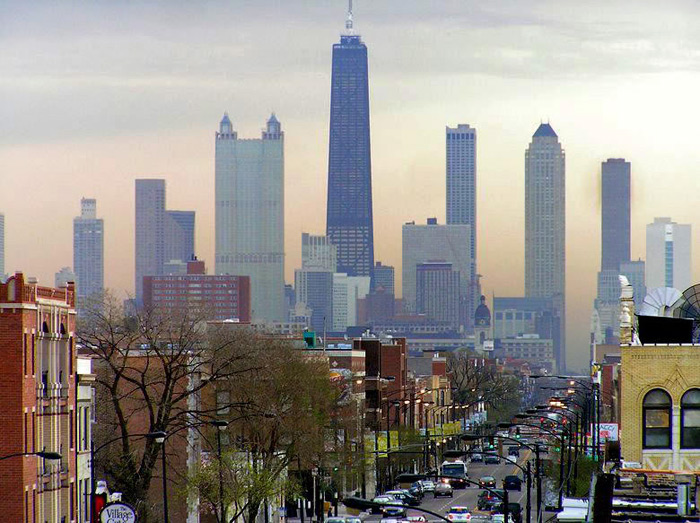
Today and tomorrow our focus is on beautiful Chicago, in scenes captured by the Polish photographer Krzycho. Here, a few blocks north of downtown, the morning sun is coming up over Lake Michigan, behind the skyscrapers, which seem quite artfully arranged.
Krzycho lives and shoots in Chicago but comes originally from Zamość in southeastern Poland. Clearly, he (or she?) is smitten by the windy city.
cityscape
Chicago
dawn
skyline
skyscrapers
clouds
(Image credit: Krzycho)
Jul 21, 2011
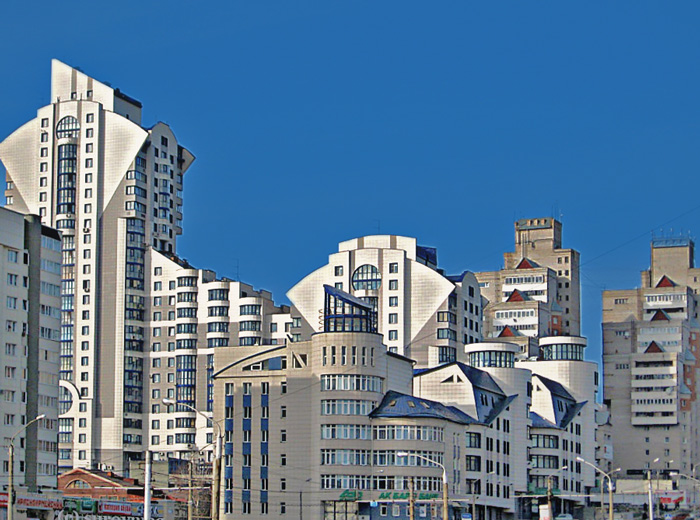 Where in the world?
Where in the world?
This is Barnaul, a city of 800,000 in Siberia, located deep in the heart of central Asia, near the mountain range where Russia, Kazakhstan, Mongolia, and China come together.
Barnaul grew large and relatively wealthy because of its double-edged location: close to the Altai Mountains, with their riches of silver, copper, and other minerals, but far from the rest of the world. During World War II, the Soviet Union relocated many of its munitions industries to Barnaul, safely distant from the front but close to major railroads that had been built for ore transport. Russia's largest ammunition plant, one of the largest in the world, still operates today in Barnaul.
The downtown area of the city doesn't look like this; it was modeled after Saint Petersburg and is known for handsome classical architecture, a sampling of which I will try to post here soon. But around the edges of town, in amongst the old silver-smelting factories and the ore-loading facilities, what we see here is what we get in twenty-first-century Barnaul.
cityscape
Russia
Siberia
mining
skyscrapers
Altai Krai
Barnaul
(Image credit: Surovy mag (
Aug 7, 2012
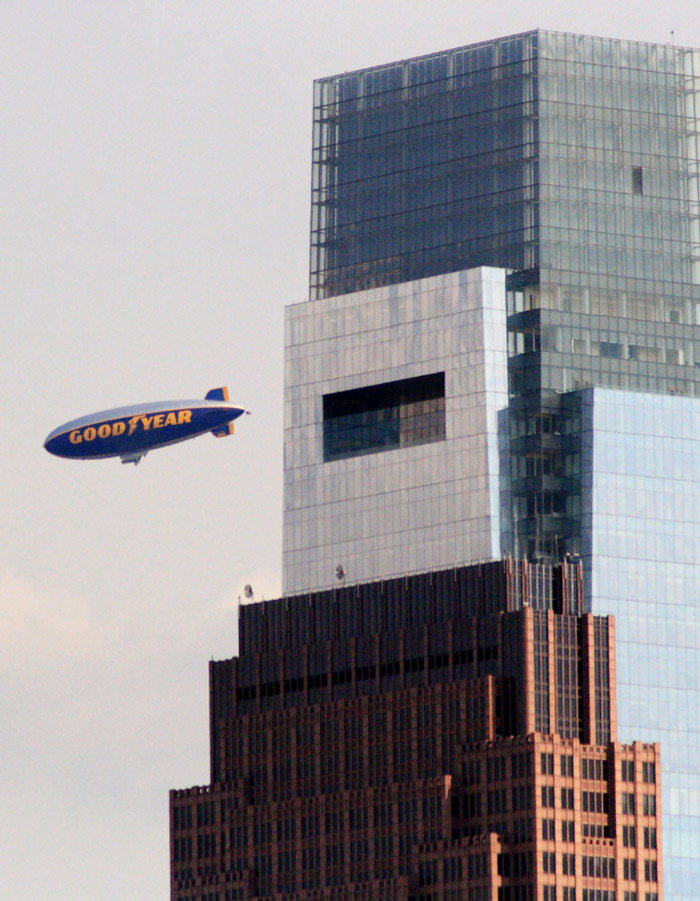 The blimp sails past the Comcast Center, tallest building in Philadelphia.
The blimp sails past the Comcast Center, tallest building in Philadelphia.
streetscape
Philadelphia
skyline
skyscrapers
Comcast Center
blimp
(Image credit: phillytrax)
Aug 18, 2012
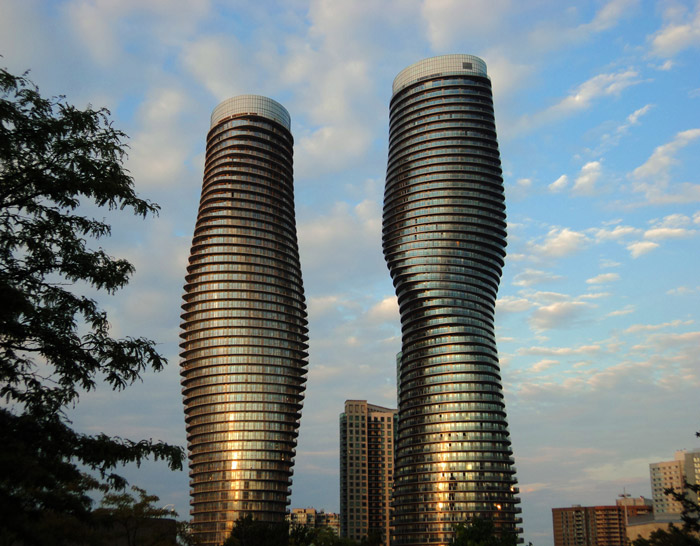 Just west of Toronto, in the fast-growing suburban city of Mississauga, these two condo towers have scratched the sky in flat-out defiance of latter-day suburban trends: they are not boxy, they are not real-estate development disasters, and not a one of their 800-plus condo units is exactly like any other in size or shape.
Just west of Toronto, in the fast-growing suburban city of Mississauga, these two condo towers have scratched the sky in flat-out defiance of latter-day suburban trends: they are not boxy, they are not real-estate development disasters, and not a one of their 800-plus condo units is exactly like any other in size or shape.
In 2005, Mississauga's mayor announced an international design competition for a single 54-story tower at the site, to be known as Absolute World. In 2007, the winning architect was announced, chosen by the voting public from among six finalists selected by a panel of Canada's leading architects and planners. The winner was Yasong Ma, of MAD Architectural Design Studio in Beijing. Almost immediately, the spiraling, curvaceous tower was nicknamed Marilyn Monroe.
When condominiums in Marilyn Monroe were offered for pre-construction sale, almost all were under contract within 24 hours. The developers quickly announced a second, companion tower, also spiraling and asymmetric but a bit more buxom, so as to accommodate a few more units. This second tower sold out within about a month.
People began moving into Marilyn Monroe, the righthand tower in this picture, in July 2011. Both towers are now fully occupied. They feature six stories of underground garage space and are located across the street from one of the largest shopping malls in North America.
Canada
cityscape
Ontario
skyscrapers
Marilyn Monroe
towers
Mississauga
Sep 26, 2012
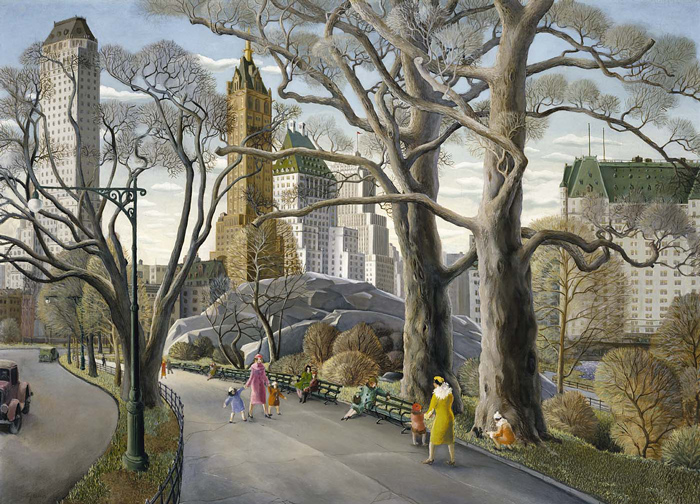 In 1934, Carl Gustaf Nelson painted life in New York's Central Park, above, the way life ought to be; in 1932 and 1933, photographers from the New York Daily News aimed their cameras at Central Park's Hooverville, below, revealing life that was not being lived the way people ought to live. Both images tell something of the story, in an upstairs-downstairs sort of way.
In 1934, Carl Gustaf Nelson painted life in New York's Central Park, above, the way life ought to be; in 1932 and 1933, photographers from the New York Daily News aimed their cameras at Central Park's Hooverville, below, revealing life that was not being lived the way people ought to live. Both images tell something of the story, in an upstairs-downstairs sort of way.
New York's homeless citizens began building shanties in Central Park's Sheep Meadow late in 1931, by which time half the factories in the city had been shut down by the Depression and literally millions of New Yorkers were desperate for food and shelter. In 1930 and 1931 homeless people tried to camp in Central Park, but they were repeatedly arrested for vagrancy; as the economic situation became more and more dire, however, policemen and judges became more sympathetic to the "bums," and official eyes were averted as this and many other Hoovervilles emerged. Some of the shacks were said to be solid brick and stone houses with tile roofs, built by unemployed bricklayers.
The residents of Central Park's Hooverville said they had built their homes along Depression Street. Many of the shanties had furniture and at least one had carpets, but there was no electricity or running water, no sanitary facilities at all. In 1933, the city condemned the dwellings, evicted the residents, and demolished the shantytown. The official justification was public health.
Thus, by 1934, when Nelson painted his picture, Central Park had been officially reclaimed for the sole use of well-dressed, well-to-do people like the ones in the painting, people with warm apartments to go home to and indoor plumbing. The people of Hooverville had moved on, and they would keep on moving on, scraping by, somehow, till a government stimulus program, aka World War II, finally brought full employment back to America.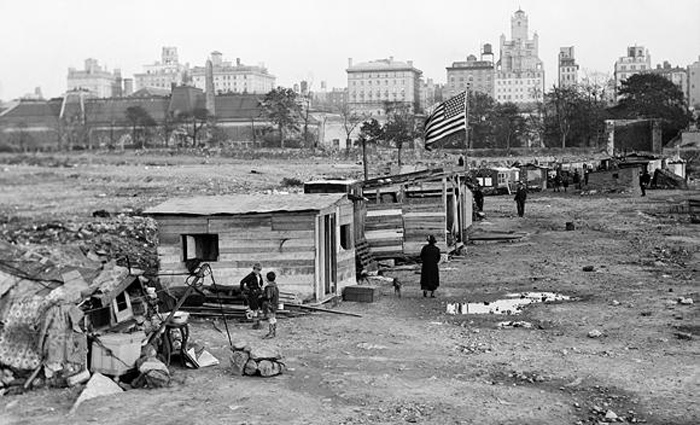
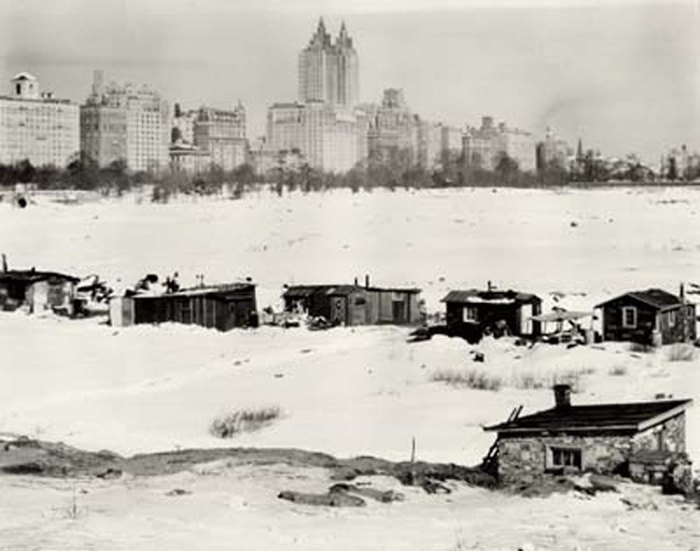
landscape
cityscape
Central Park
children
New York City
skyscrapers
Depression
park
Hooverville
shacks
(Painting by Carl Gustaf Nelson; Photos by New York Daily News)
Oct 5, 2012
 New York City (2012), by Trey Ratliffe.
New York City (2012), by Trey Ratliffe.
streetscape
high dynamic range
New York City
skyscrapers
(Image credit: Trey Ratliffe)
Nov 19, 2012
 From the rooftops, here on Kater Street, you can see most of Philadelphia's gap-toothed skyline, such as it is. This is a city that had no tall skyscrapers at all until the late 1980s and does not yet have a critical mass of them, skyline-wise.
From the rooftops, here on Kater Street, you can see most of Philadelphia's gap-toothed skyline, such as it is. This is a city that had no tall skyscrapers at all until the late 1980s and does not yet have a critical mass of them, skyline-wise.
From a few fortunate vantage points around town, the buildings of Center City appear to clump together more or less like a proper downtown. But from most places, including the roofs of Kater Street's two-story row houses, the skyline looks raggedy and disorganized.
Actually, from the roof of our own house up toward the end of the block, you can't see the skyline at all on account of the trees–or at least that was the case last week, when we climbed up there and shot this picture. Since then, the leaves have yellowed and dropped quite suddenly, and we would imagine the view is now only partially blocked, by a lacework of tree branches.
birdseye view
Philadelphia
Kater Street
skyline
skyscrapers
Center City
rooftops
Jul 15, 2013
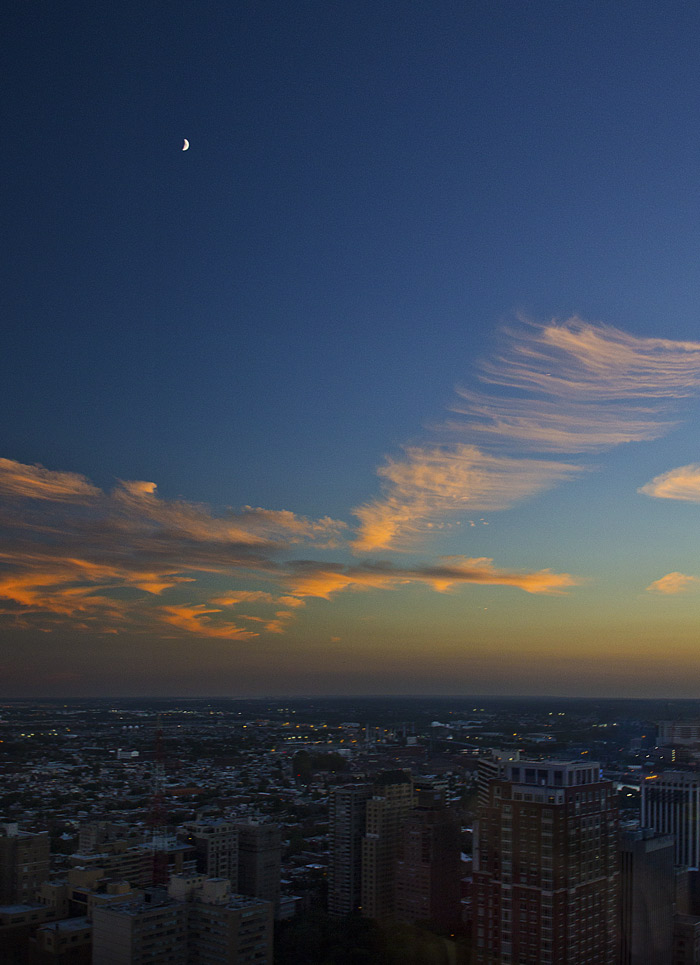 Looking out over Philadelphia through the window of a restaurant on the 37th floor of 2 Liberty Place, a downtown skyscraper.
Looking out over Philadelphia through the window of a restaurant on the 37th floor of 2 Liberty Place, a downtown skyscraper.
cityscape
birdseye view
night
sunset
Philadelphia
sky
skyline
skyscrapers
Center City
Nov 7, 2013
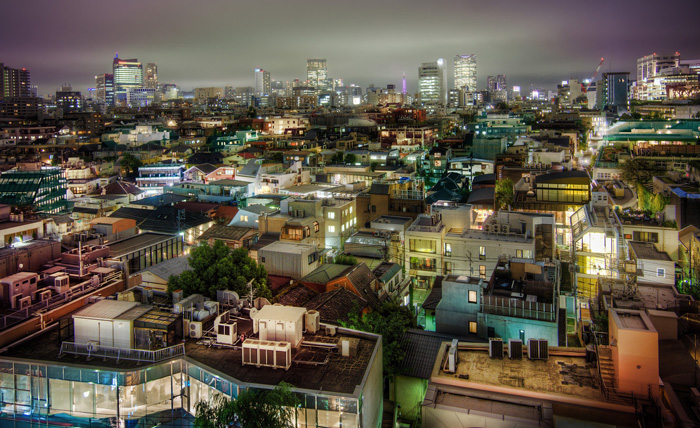 Photographer Trey Ratcliff called this picture "The Infity of Tokyo."
Photographer Trey Ratcliff called this picture "The Infity of Tokyo."
cityscape
aerial view
birdseye view
night
Japan
skyline
skyscrapers
Tokyo
heat island
(Image credit: Trey Ratcliff via Stuck in Customs)
Jan 18, 2014
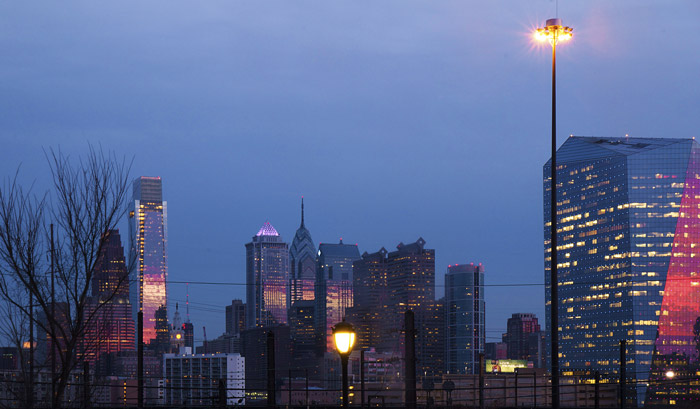 We take a brief break from admiring New Zealand in order to catch the view Friday evening from Drexel Park in West Philly, when the center city skyscrapers snagged the sunset.
We take a brief break from admiring New Zealand in order to catch the view Friday evening from Drexel Park in West Philly, when the center city skyscrapers snagged the sunset.
cityscape
night
sunset
skyscrapers
Philly
(Image credit: Hank Stein)
Aug 18, 2014
 Above, in New York; below, in London.
Above, in New York; below, in London.

cityscape
architecture
skyscrapers
glass
(Image credits: London, Dan Cook; New York, Phil Marion)
Nov 6, 2014
 Two cranes get their act together high in the sky above New York City's High Line promenade.
Two cranes get their act together high in the sky above New York City's High Line promenade.
Many, many cranes are hard at work these days in that neck of the woods; apparently, real estate developers are firmly of the opinion that people will pay even more than the usual Manhattan rates to live in an apartment or condo near the High Line. They may be right; nobody's yet found the ceiling on what New Yorkers will pay for anything.
New York
Manhattan
cityscape
cranes
skyline
skyscrapers
High Line
(Image credit: Fuji T)
Apr 20, 2015
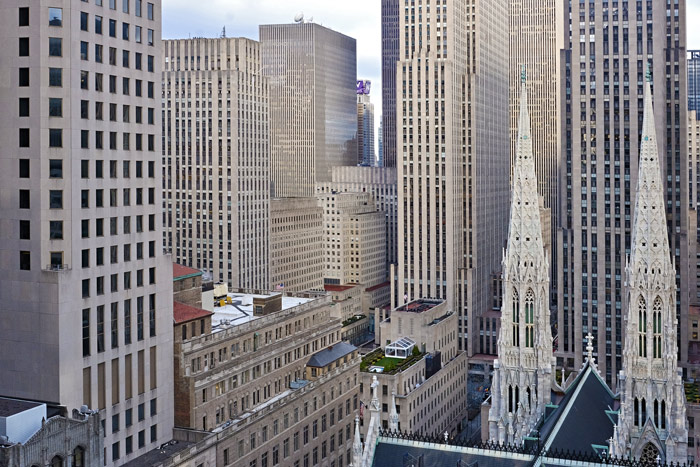 St. Patrick's Cathedral from behind and a little bit above, in midtown Manhattan. We enjoyed this view from the window of our hotel room during a recent trip to New York.
St. Patrick's Cathedral from behind and a little bit above, in midtown Manhattan. We enjoyed this view from the window of our hotel room during a recent trip to New York.
New York
Manhattan
skyline
skyscrapers
rooftops
St. Patrick's Cathedral
midtown
spires
(Image credit: Fuji T)
Mar 5, 2016
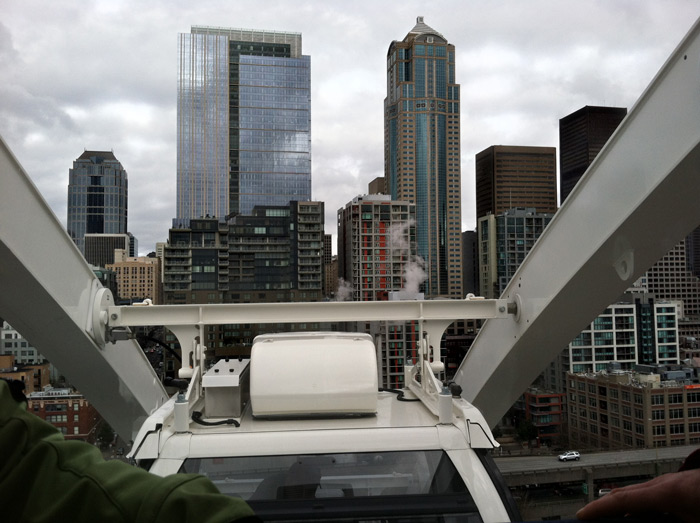 Downtown Seattle in the wintertime, as seen from the ferris wheel on the waterfront.
Downtown Seattle in the wintertime, as seen from the ferris wheel on the waterfront.
birdseye view
winter
skyline
skyscrapers
Seattle
May 17, 2016
 Let's just not go there with the hypertension thing, though it's a real deal, all properly proclaimed. But today is way too remarkable for other reasons.
Let's just not go there with the hypertension thing, though it's a real deal, all properly proclaimed. But today is way too remarkable for other reasons.
To start with, very close to home, we celebrate May 17 as the birthday of our little sister Carol, as well as the birthday, on the Stein side of the family, of our brother-in-law Bob, as well as the wedding anniversary of Richard and Arleigh Stein, as well as the 480th anniversary of the annulment of the marriage of Anne Boleyn and King Henry VIII of England.
Not only, not only. The very day of little sister's birth in 1954 is also known to history as the day the U.S. Supreme Court announced its decision in Brown v. Board of Education, knocking the legalistic props out from under racial segregation in public schools, though of course failing to end racial segregation in public schools. And there's more, at least on a technicality: the Brown decision applied only to public schools run by the various state governments, not to schools in the District of Columbia, where everything was run by the federal government and also where, it so happened, our little sister was born. The Supreme Court needed to decide a separate case, Bolling v. Sharpe, to order desegregation of schools in Washington, D.C., but it efficiently took care of that detail on the very same day as little sister's birth. Eight days later, the D.C. School Board announced a desegregation plan, and thus, had little sister been smart enough to start school as a newborn infant, which she very nearly was, she might have enrolled in a newly desegregated classroom.
The photo above shows a bit of what Sis is up to these days: mosaicking the side of her garage to suggest a door and some pretty awesome windows.
art
trompe l'oeil
skyline
skyscrapers
mosaic
Arizona
(Art by C. Fuchs)
tiles
(Image credit: C. Fuchs)
Jan 17, 2018
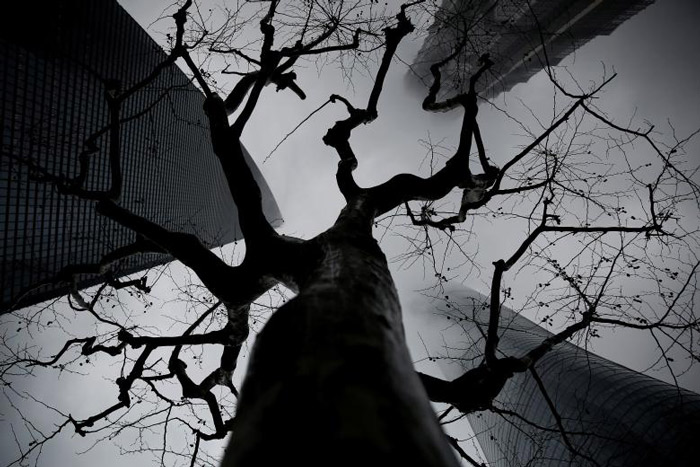 Fog swallows the tips of new skyscrapers around an old tree in the Pudong Financial District of Shanghai.
Fog swallows the tips of new skyscrapers around an old tree in the Pudong Financial District of Shanghai.
Shanghai
China
tree
skyline
skyscrapers
fog
Pudong Financiall District
(Image credit: Aly Song for Reuters)


 The blimp sails past the Comcast Center, tallest building in Philadelphia.
The blimp sails past the Comcast Center, tallest building in Philadelphia.
 In 1934, Carl Gustaf Nelson painted life in New York's Central Park, above, the way life ought to be; in 1932 and 1933, photographers from the New York Daily News aimed their cameras at Central Park's Hooverville, below, revealing life that was not being lived the way people ought to live. Both images tell something of the story, in an upstairs-downstairs sort of way.
In 1934, Carl Gustaf Nelson painted life in New York's Central Park, above, the way life ought to be; in 1932 and 1933, photographers from the New York Daily News aimed their cameras at Central Park's Hooverville, below, revealing life that was not being lived the way people ought to live. Both images tell something of the story, in an upstairs-downstairs sort of way.












 Fog swallows the tips of new skyscrapers around an old tree in the Pudong Financial District of Shanghai.
Fog swallows the tips of new skyscrapers around an old tree in the Pudong Financial District of Shanghai.